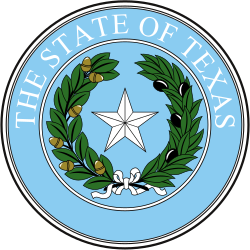Background
The Republican Party had held the Senate since the 1996 elections. Most observers, as well as the national parties, viewed Texas as a safe red state, as Republican candidates had swept statewide elections since 1998. Republicans reached a new zenith after the 2010 elections, when backlash to the presidency of Barack Obama kept the Senate firmly in their control and led to a record number of victories in the House of Representatives. [2] As the first election after the 2010 United States census, all Senate districts had to be redrawn to account for population changes over the preceding decade. Typically, State senators serve four-year terms in the Texas State Senate; however, all Senate seats come up for election in the cycle after decennial redistricting. Due to this, senators elected in 2010 served only two-year terms, and half of the senators elected in this election served two-year terms, coming up for re-election again in 2014. To claim control of the chamber from Republicans, the Democrats needed to gain four seats.
Challenges to Republican-drawn Senate map
Republicans had sole control over redistricting the state's U.S. House delegation and both state legislative chambers for the 2012 elections. The 10th Senate District, the most-altered in the body, belonged to Wendy Davis (D-Fort Worth), whose seat was drawn to add more Republican voters from greater Tarrant County while placing voters from Democratic areas out of the district. However, the proposed Senate map for 2012 was challenged under Section 5 of the Voting Rights Act and in U.S. District Court for racial gerrymandering. The United States District Court for the Western District of Texas ruled with the plaintiffs and proposed its own example map, undoing the racial gerrymander in Senate District 10, and ordered the legislature to draw a new map based on its own. Ultimately, this election used boundaries made with input from both the Court and Republican legislators. [3] [4] [5]
This page is based on this
Wikipedia article Text is available under the
CC BY-SA 4.0 license; additional terms may apply.
Images, videos and audio are available under their respective licenses.


